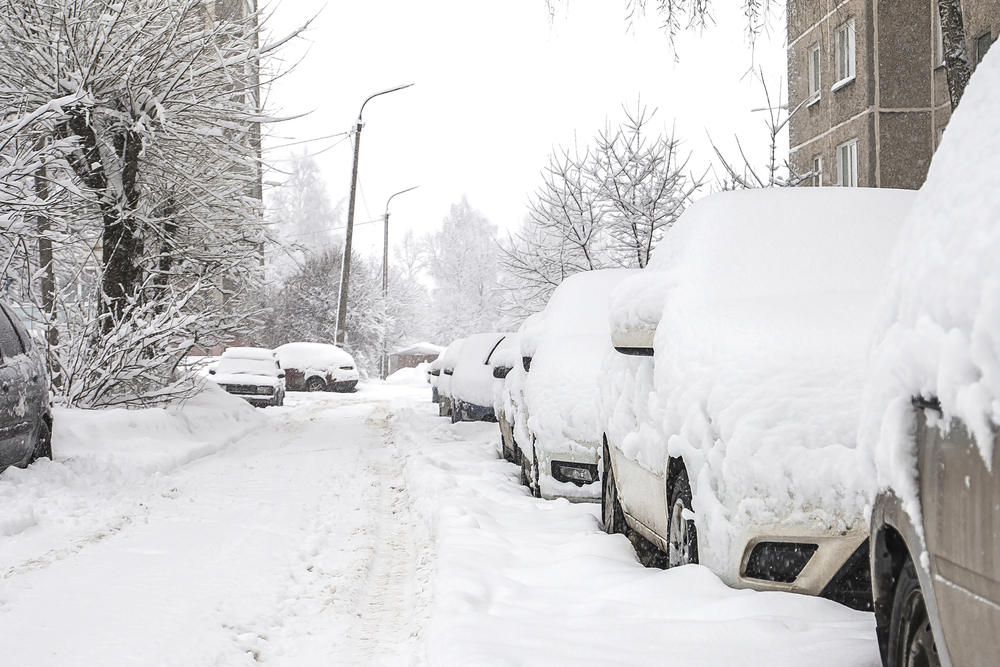Winter Storm Plagues East
Jan 31, 2022
A winter storm that started in the southeast traveled up the coast finishing up as a major nor’easter pelting the New England states with snow and hurricane like winds.
The storm started in North Carolina on Friday, January 28, and expanded through Virginia, Maryland, Delaware, New Jersey, Pennsylvania, New York, Connecticut, Rhode Island, Massachusetts, and ultimately into Maine before crossing the border into Canada.
Sections of 10 states were under blizzard warnings including Maine, New Hampshire, Rhode Island, Connecticut, New York, New Jersey, and in the Delmarva Peninsula in Delaware, Maryland, and Virginia. Washington and Baltimore were spared the worst of the storm.
On Saturday, January 29th, the storm was pummeling the Northeast with heavy snow and wind gusts near hurricane force, which caused coastal flooding and threatened widespread power outages. More than 100,000 people were without power along the coastlines of Long Island, Maine, and Massachusetts.
By late morning, more than a foot of snow blanketed parts of New Jersey’s shore as well as eastern Long Island.
Most flights into and out of the airports in New York, Boston, and Philadelphia were canceled Saturday, according to FlightAware. More than 4,500 flights were canceled across the U.S. Amtrak canceled all of its high-speed Acela train service between Boston and Washington and canceled or restricted other service in the region.
Throughout the region, residents were advised to shelter in place and avoid travel. Government officials warned of whiteout conditions.
Residents in the seaside town of Newburyport, north of Boston near the New Hampshire border were advised to seek shelter on higher ground.
Tens of thousands of homes and businesses lost power in Massachusetts.
Fortunately, the snow was light and fluffy, which is less capable of snapping trees and tearing down power lines. The timing was fortunate as well since the storm struck on a weekend when schools were closed and few people were commuting.
Rhode Island was under a blizzard warning and banned all non-essential traffic starting at 8 a.m. on Saturday. Severe winds blew snow sideways in Providence.
In West Hartford, Connecticut, a tractor-trailer jackknifed on Interstate 84, causing the closure of several lanes. Massachusetts banned heavy trucks from interstate highways.
Residents on Nantucket Island off Cape Cod experienced heavy flooding. Water flowed through the main streets around homes and shops.
On New York’s Long Island, East Hampton authorities reported near-whiteout conditions and as much as 8-inches of snow had fallen by midmorning. Wind gusts were clocked at more than 50 mph.
In Philadelphia nearly 6-inches of snow fell by early Saturday. Parts of the New Jersey shore were covered with more than 13-inches of snow by midday, according to the National Weather Service.
Oceanfront homes along the Massachusetts coast were savaged with waves that crashed over houses.
The storm’s atmospheric pressure dropped so much that the storm qualified as a bomb cyclone, an intense storm category that includes hurricane-strength winds.
Kathy Hochul, governor of New York, said that communities on Long Island were expected to suffer the state’s heaviest impact with up to 1 and one half feet of snow and severe winds. Parts of New York City were expecting as much as one foot of snow.
Temperatures in the Northeast were expected to be low once the nor’easter past. Wind chills were expected to drop to between zero degrees and – 10 degrees Fahrenheit on Saturday evening, reported the National Weather Service.
It was also expected that thick sheets of ice would remain across the New England region’s highways and roads well into next week. Temperatures are expected not to rise above freezing until Wednesday or Thursday.
According to poweroutage.us, as of 10:30 a.m. eastern time on Monday, January 31, the top areas by outages included:
- North Carolina 4,634
- Texas 4,139
- Florida 2,630
- Virginia 1,828
- New Jersey 1,700
- Georgia 1,688
- New York 1,385
- Massachusetts 1,333
It’s bad enough to be left in the dark after a severe snowstorm, but when temperatures drop below freezing and temperatures combined with the wind chill factor are zero or below, then surviving in a home without electricity can be a life or death issue.
That’s why people who live in the coldest regions of the United States, which are susceptible to heavy snowstorms, should equip their homes with a standalone generator to assure that electricity remains on and family members are in comfort until power can be restored.
APElectric stocks a wide assortment of generators from some of the most popular generator manufacturers in the country. Visit the company’s website to review the inventory and learn how to select the best generator for your particular situation.
